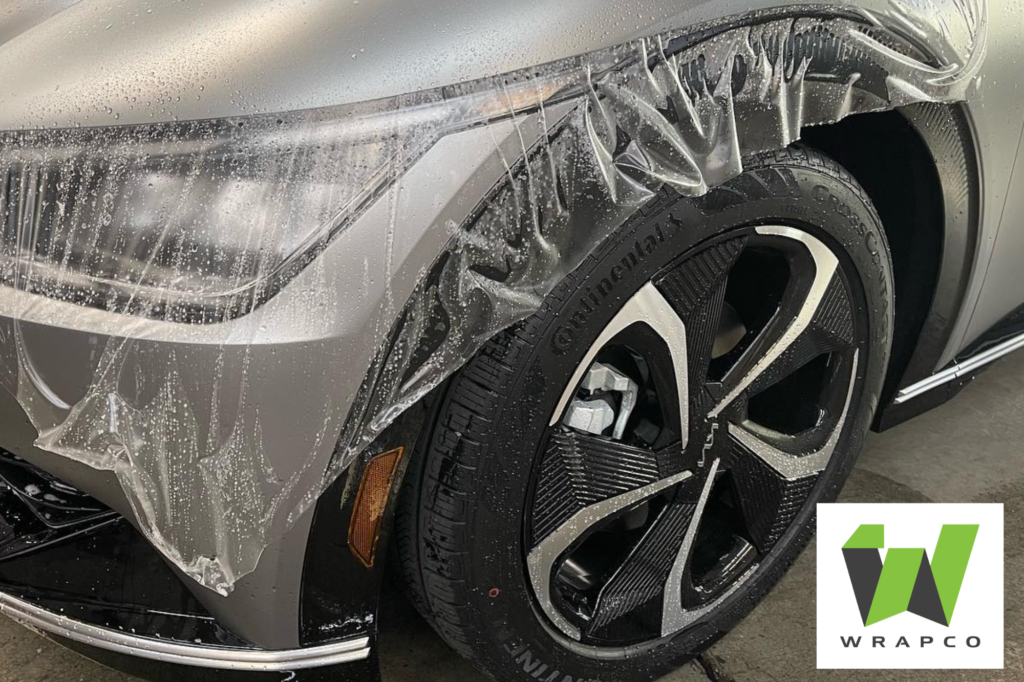Absolutely, your car’s paint is more vulnerable than you might think. Constant exposure to sunlight leads to UV degradation, while pollutants and certain cleaning products cause microscopic etching, dulling your car’s shine. Minute scratches from road debris and thermal fluctuations from varying temperatures can lead to additional damage. The accumulative result? Poor aesthetic appeal, eroding structural integrity, and declining vehicle value. Paying attention to these factors, as well as routine maintenance, can extend the life of your car’s paintwork. Keep going to understand the essentials of paint protection and professional solutions to enhance your car’s finish.
Key Takeaways
- Prolonged sunlight exposure can damage your car’s paint by causing UV degradation, oxidation, and fading.
- Environmental contaminants like acid rain and pollutants can cause microscopic etching, damaging the paintwork.
- Road debris and micro-scratches, often unnoticed, can dull your car’s paint and affect its shine.
- Temperature fluctuations can cause the paint to expand and contract, leading to cracking and further oxidation.
- The use of harsh cleaning products can strip away the paint’s protective layers, exposing it to further damage.
Understanding Your Car’s Paint Job
While you might think that your car’s paint job is simply about aesthetics, it actually serves a crucial protective function. It’s the first line of defense, shielding your vehicle’s metal components from the elements, corrosion, and rust.
A proper paint job is more than just a coat of color. It consists of several layers, each serving a unique purpose. The primer, applied directly to the metal, guarantees ideal adhesion of the subsequent layers. Next comes the base coat, which provides the color and visual appeal.
Finally, the clear coat, a transparent layer, offers protection from UV rays, chemicals, and minor abrasions. This layer also gives your vehicle its gloss and depth of color.
However, despite its seemingly robust structure, your car’s paint isn’t invincible. Over time, the clear coat can start to degrade, leaving the base coat vulnerable. This is where the real damage begins.
Once the base coat is exposed, your vehicle becomes susceptible to rust and corrosion. Thus, maintaining your car’s paint job isn’t only about keeping it looking good but also about preserving its structural integrity.
Common Causes of Paint Damage
Numerous factors can cause considerable damage to your car’s paint over time. Sunlight exposure is a key culprit, with UV rays gradually breaking down the clear coat, leading to oxidation, fading, and dullness of color. This is especially true for bright colors like red and blue, which are more susceptible to fading.
Besides sunlight, contaminants and pollutants such as acid rain, industrial fallout, and air pollution can leave behind acidic or corrosive residue. This can create microscopic etchings on the paint surface, leading to discoloration and a rough texture over time.
Road debris and micro-scratches also contribute considerably to paint damage. Grit, sand, and small rocks from daily driving can create tiny scratches, while improper washing techniques can lead to swirl marks.
Temperature fluctuations also damage your car’s paint. The constant expansion and contraction of the paint due to changing temperatures can lead to cracking, peeling, and accelerated oxidation.
Finally, improper cleaning products can strip away wax and clear coat protection, leading to faster deterioration of your car’s paint job.
Identifying Hidden Paint Damage
So, how do you spot hidden paint damage? It’s not always as clear-cut as a chip or scratch, but there are signs to look for. UV rays, for instance, can gradually break down your car’s clear coat, leading to color dullness and oxidation. You might notice your bright red or blue car seems less vibrant or that the paint feels chalky to the touch.
Contaminants and pollutants are another hidden threat. Acid rain, industrial fallout, and corrosive chemicals can leave residue on your car, causing invisible micro-etching on the paint surface. You might notice a gritty texture or small, etched areas that become more visible over time.
Road debris and improper washing techniques can cause tiny, often unseen scratches that dull your paint’s shine and thin the protective clear coat.
Temperature fluctuations can also lead to stress cracks and accelerated oxidation. Finally, using harsh cleaning products can strip away your car’s wax and clear coat protection, leading to paint deterioration faster.
Identifying hidden paint damage early allows for timely intervention and can save you from costly repairs down the line.
Effects of Neglected Paint Damage

Neglecting these early signs of paint damage can lead to an array of costly and unsightly issues.
You risk a drab and dull appearance and potentially reduce your vehicle’s value. Over time, neglected paint can become porous, absorbing contaminants like road salt, tar, and acid rain. These contaminants can oxidize the metal underneath, leading to rust that can be a nightmare to repair.
Faded paint isn’t just an aesthetic issue; it’s indicative of a weakened clear coat. This layer not only gives your car its shiny finish but also acts as a barrier against environmental damage. A compromised clear coat exposes the colour layer underneath to UV rays, which can lead to further fading and eventually cause the paint to flake off.
Moreover, those tiny, seemingly harmless chips and scratches from road debris can evolve into significant paint peelings if not addressed promptly. They can also become entry points for moisture, escalating the rusting process.
Protecting Your Car’s Paint
While it may seem intimidating, protecting your car’s paint from the myriad of threats it faces is entirely achievable with the right knowledge and tools.
Start by understanding the damage that UV rays can do. These rays break down your car’s clear coat, leading to oxidation and fading. Consequently, parking in a shaded area and regularly waxing your car can help mitigate this damage.
Environmental pollutants like acid rain and industrial fallout are another concern. They leave corrosive residue on your car, damaging the paint over time. By washing your vehicle frequently, you’ll prevent these contaminants from settling on your paint.
Road debris and improper washing techniques can cause micro-scratches on your car’s paint. To combat this, consider using a high-quality car shampoo and soft washing mitt.
Temperature fluctuations can also weaken your paint’s clear coat. In this case, a ceramic coating can provide thermal resistance and extra protection. If you’re in the Pacific Northwest, ceramic coating Portland professionals offer high-end applications tailored to the climate.
Lastly, improper cleaning products can strip away your car’s wax and clear coat. To avoid this, always use pH-neutral soaps and high-quality cleaning tools.
Professional Help and Solutions
Although caring for your car’s paint might seem challenging, professional detailing services are a game-changer in maintaining your vehicle’s pristine finish. They offer targeted solutions that combat specific threats, ensuring your car’s luster lasts longer.
One effective approach is ceramic coating, a nano-level protective layer that shields your car from UV rays, contaminants, and light scratches. Many Portland ceramic coating services include this in their advanced paint protection packages. It also bestows your car with hydrophobic properties, so dirt and grime slide right off.
Another potent strategy is Paint Protection Film (PPF). This clear urethane film absorbs the impact of rocks, road debris, and minor abrasions and has self-healing properties, meaning minor scratches disappear with heat exposure.
Regular professional detailing, involving clay bar treatments, paint correction, and sealant or wax applications, also plays an essential role. This process removes unseen contaminants, eliminates micro-scratches and swirl marks, and adds a protective layer against environmental damage.
Ultimately, investing in professional help enhances the appearance of your car and extends the life of its paintwork.
In Summary
So, don’t underestimate those invisible threats to your car’s paint. Whether it’s UV rays, harsh pollutants, or tiny road debris, they’re all potential destroyers of your car’s beautiful finish. Ignoring these can lead to dullness, fading, and expensive fixes. But with a good understanding of your car’s paint job, regular checks, and protective measures, you can keep your ride looking its best. And remember, professional help is always available when needed—especially with ceramic coating services Portland car owners trust WrapCo to preserve their vehicle’s value.

